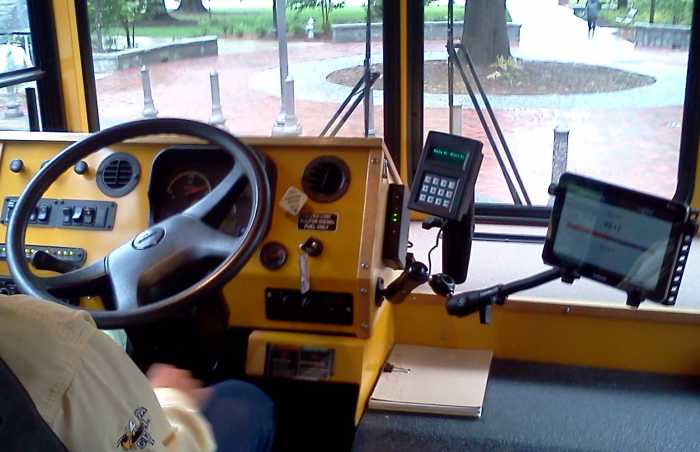The CNN reports on research which uses a Markov Chain model to avoid buses bunching, a phenomenon that’s a cliché of observational comedy and “happens when buses are thrown off schedule because of traffic, weather or too many passengers at one stop”.

The system has been tested on shuttle buses serving Georgia Tech’s campus. Buses on the route are tracked by GPS. The buses are held at the start of the route until an appropriate time, then drivers are told to proceed without following any schedule for individual stops. Passengers arrive at any stop on the route and know that a bus will arrive within 6 minutes.
Researcher John Bartholdi is quoted saying
The trick is to hold the bus for an adjustable amount of time at one stop. We simply control how long they wait at the end of the route, and then we tell them, ‘drive comfortable with the traffic to the other end. Don’t worry about where you are. Just flow with the traffic.’
The CNN piece even allows Dr. Bartholdi some space at the end of the article to explain (with equations!) how the evolution of the “headway” (the space between buses) over time, as buses are held and released, is modelled as a finite-state Markov chain.
Bertholdi and his co-author Don Eisenstein of U Chicago have gone to a lot of effort to make a really accessible page explaining the problem and their solution. It even has a java applet simulating the solution, which helps a lot.
When a bus arrives at one end of the route, it “looks” at the bus immediately following and and estimates the time until its arrival. Then it performs a simple calculation that determines how long to pause. This pause changes the headway of each newly arrived bus to an average of its former headway and the headway of the following bus. If its former headway was larger, its new headway becomes smaller, and vice versa. The result is that headways are constantly adjusted to become more nearly equal.
A major benefit of the scheme seems to be that it responds very well to the sudden removal of a bus from the route, since the other buses quickly adjust to restore equal headways. Additionally, “Georgia Tech drivers have been very cooperative and claim to prefer this scheme, because it removes the constant pressure of schedule adherence.”
Source: Waiting for a bus? Math may help.
Paper: A self-coördinating bus route to resist bus bunching
Researchers’ page: Self-coördinating buses resist bunching (archaic diaereses theirs)
Thanks for pointing me to a fascinating story. My brother works in transportation analysis. I’ve just sent the links to him.
The comments at CNN show how resistant people are to understanding a new idea. Many of them think that delays must make things worse for passengers, and think the wrong problem was solved. Hmm…